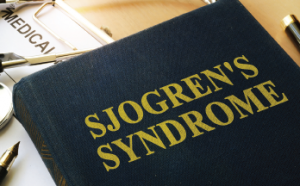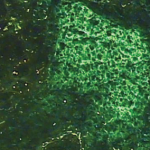
designer491 / shutterstock.com
Physicians already know a great deal about Sjögren’s syndrome’s symptoms and potential complications, and a new study confirms data on two long-suspected predictors of progression (i.e., measurable phenotypic findings) that could show which patients are likely to progress to active disease: hypergammaglobulinemia and hypocomplementemia.
Published in the February issue of Arthritis Care & Research, “Natural History and Predictors of Progression to Sjögren’s Syndrome Among Participants of the Sjögren’s International Collaborative Clinical Alliance Registry” (SICCA) looked at data from 771 patients at both baseline and a follow-up visit after two to three years.1 The study analyzed various data “to explore changes in the phenotypic features (serologic, oral and ocular) of Sjögren’s syndrome, and in Sjögren’s syndrome status among participants” over this two- to three-year interval, the paper says.
Sjögren’s syndrome (SS) is a systemic autoimmune disease that affects anywhere from two to 10 in 10,000 people, according to one U.S. population-based cohort study published in 2016.2 SS typically progresses slowly, and patients experience often debilitating loss of function in their moisture-producing glands, including the salivary and lacrimal glands. In SS, mononuclear lymphoid cells infiltrate these organs and gradually replace epithelial tissue. Various chemokines and cytokines are involved in this process, and B cell activating factor may play a particularly strong role. Research is underway to identify new genetic and molecular markers in SS to improve diagnosis and lead to the development of new, more effective therapies.3
Progression to Disease
SICCA, funded by the National Institute of Dental and Craniofacial Research (NIDCR) of the National Institutes of Health, was launched by a global group of clinical and laboratory investigators in 2003. SICCA’s main goal was to establish an international biorepository of samples and a registry of patients with signs and symptoms of SS or those who have received a diagnosis of SS. These serve as resources for scientists around the world. Another primary objective of the SICCA project was to develop new classification criteria for SS, says Caroline H. Shiboski, DDS, MPH, PhD, the Leland A. and Gladys K. Barber Distinguished Professor in Dentistry at the University of California, San Francisco.
This two-phase study included nine academically based research groups in Argentina, China, Denmark, Japan, the U.S., the United Kingdom and India, each including one or more rheumatologists, ophthalmologists and oral medicine/pathology specialists with experience diagnosing and managing SS patients.
To classify patients for inclusion in clinical trials and other studies, two sets of criteria exist. An initial set of classification criteria was provisionally approved by the ACR in 2012.4 Subsequently, a definitive set of classification criteria, the development and validation of which involved a group of SS experts both within and outside of SICCA, was approved by both the ACR and the European League Against Rheumatism (EULAR) in 2016.5 Both sets were used to define SS in the present study, which explores changes over time with respect to phenotypic features of SS and to SS status.
‘While some progress has occurred over time, there can still be a lot of delay in the initial diagnosis.’ —Dr. Shiboski
Study Methods & Results
The SICCA researchers explored changes in phenotypic features of SS over a two- to three-year period. All participants were part of the SICCA registry and had objective measures of salivary hypofunction, dry eye, focal lymphocytic sialadenitis in a minor salivary gland biopsy, or anti-SSA/Ro or anti-SSB/La antibodies.

